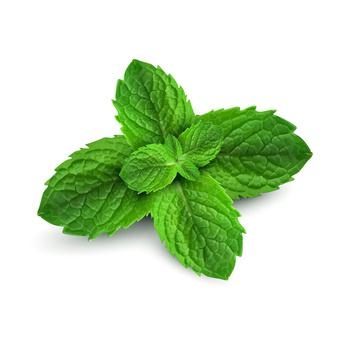Peppermint (Mentha x piperita) is an aromatic perennial plant of the Lamiaceae family that grows throughout Asia, Europe, and the United States. It is a natural hybrid of Water Mint (Mentha aquatica) and Spearmint (Mentha spicata), grows to a height of three feet, has green leaves with sharply serrated edges, and produces a light purple flower.
Although first cultivated in England during the 17th Century, 75% of the world's current supply is produced right here in the United States and while primary peppermint production focuses upon the harvest of its essential oil for medicinal and therapeutic purposes, it is equally popular as a flavoring agent. The many forms available for sale including tincture, tea, oil, capsules, and tablets, as well as both fresh and dried leaves. Direct forms of the herb commercially available for sale aside, consider that it flavors everything from chewing gums, mints, candies, and ice creams to tobacco, toothpaste, cough drops, alcoholic liqueurs, teas, and digestive aids. Aromatic products are equally as varied and include soaps, cosmetics, perfumes, and detergents, as well as being contained within innumerable over-the-counter medications, just to name a few.
The medicinal components are, in fact, derived from the entire plant and include a volatile oil (the essential aromatic oil), phenolic acids (aromatic acid compounds), flavonoids (naturally occurring phytochemicals), and triterpenes (aromatic hydrocarbons). It is the essential oil that contains the three principal active ingredients which make peppermint so valuable a crop. They are menthol, menthone, and menthyl acetate, with the former providing the cooling sensation synonymous with peppermint, and the associated latter two ingredients responsible for its minty aroma and flavor.
Interestingly, the quality of the essential oil is dictated solely by its menthol content which varies according to growing environment, habitat, and climate. While domestic peppermint contains 50 -78% menthol and English peppermint contains 60-70% menthol, it is Japanese peppermint oil that contains a percentage of menthol so high (85%)that menthol crystals are known to form right on the leaves themselves.
Once peppermint is ready for harvest, it is only collected in the cool hours of the morning to ensure afternoon heat does not reduce the available oil content of the leaves. Generally, this occurs just before the plant blooms in July or August.
Setting aside the commercial aspect to growing peppermint, it is a relatively simple herb to grow indoors over winter months. Simply select an eastern facing windowsill to ensure the plant is allowed to enjoy its preferred less intense morning sunshine and cooler temperatures. Use good potting soil with a layer of gravel above the drainage hole and ensure the soil remains evenly moist throughout the growing cycles. As humidity is important to peppermint, fill a water collection tray with water and pebbles below your potted plant (misting between waterings is a viable alternative). Rotating the pot twice a week will ensure your plant grows vertically, and exercise care in fertilizing at more than half strength because excessive fertilizer will result in a loss of flavor once harvested.
As a bonus, despite a nursery seedling requiring about 90 days to mature, it is often possible to harvest a few aromatic leaves within just three weeks of planting. And, if you want to go all out on this window garden box, consider adding Chervil (Anthriscus cerefolium), an essential herb in Béarnaise sauce. You will then have a well-balanced food-to-drink ratio in your herb repertoire as long as you contain the peppermint (it has the propensity to outgrow its intended growing zone if left to its own devices).